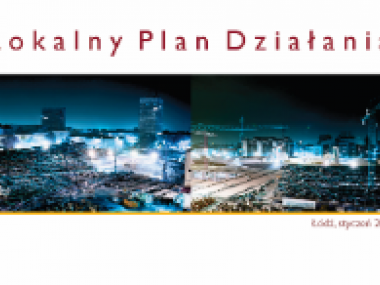The New Centre of Łódź has a Local Action Plan
Edited on
27 April 2015Strategic management of the space of the New Centre of Łódź in the transition period and interdisciplinary and comprehensive processes leading to the accumulation of knowledge about the users of the Łódź Fabryczna multimodal hub are the main assumptions underlying the Local Action Plan which was presented during a meeting held on April 24.

The Local Action Plan is one of the products of the ENTER.HUB project that aimed to
identify the optimal uses of regional railway hubs to enable sustainable, economic, cultural and social growth of medium-sized cities in Europe. The project was carried out by 12 cooperating cities and regions. The plan for the Łódź Fabryczna multimodal hub recommends solutions that will make the hub an attractive place for passengers and the residents of Łódź and will stimulate the economic development of Łódź and of the adjacent areas. These strategic solutions for the region will be enabled, in particular, by the provisional site development project (PSDP) and the research project „Łódź Communication Lab”.
The first of the projects arises from the need to provide the area of the New Centre of Łódź (NCŁ), including EC1, the City Gate and the Łódź Fabryczna multimodal hub, with temporary and low-cost spatial solutions for the period of time before the desired projects are located there by the private sector. This approach is to ensure appropriate quality and comfort of use of the NCŁ space at all stages of the development process, including the improvement of the spatial and functional linkages between the NCŁ and the historic centre of the city stretching along the axis of Piotrkowska street. To attain these goals, changes enabling the temporary development of the site have already been introduced to the Local Zoning Plan and the PSDP has been incorporated into the Master Plan for the New Centre of Łódź Programme as one of the activities supporting the success of this development project. The PDSP will be carried out from 2016 to 2030; it is preceded by a conceptual and organisational stage which started last year.
The second pillar of the Local Action Plan is a large-scale, and unique in the country, research programme focusing on the users of the multimodal hub. The intensity of urban traffic and the sociological, psychological and economic aspects of transport will be studied for several years. The findings of the programme will be used, in particular, to optimize the functionality of Łódź Fabryczna Station as an interchange hub providing access to other modes of transport, to customise transport services of the Łódź Agglomeration Railway to the residents’ needs, to achieve better coordination of public transport subsidized by the city, and to prepare more accurate forecasts of demand for railway and city transport services. Research activity will be conducted in close cooperation with the representatives of the scientific community. It will encompass the formulation of a set of research problems and incorporation thereof into the Multiannual Programme of the Łódź University of Technology, a plan to establish a comprehensive knowledge base at tertiary education institutions in Łódź, as well as cooperation with the representatives of foreign universities.
The proposals included in the Local Action Plan were created by the Local Support Group consisting of persons in charge of urban development and transport policy in the City of Łódź and in the region, the representatives of non-governmental institutions and tertiary students. Similar groups were formed in connection with the ENTER.HUB project in 11 partner cities and regions in Europe involved in the construction of large railway hubs serving entire regions or high speed railways: Reggio Emilia (Italy), Ciudad Real (Spain), Agglomeration Creil (France), Ulm (Germany), Gdynia, Girona (Spain), Lugano (Switzerland), Region Orebro (Sweden), Porto (Portugal), Preston (UK), Rostock (Germany).
The project “ENTER.HUB - European Network exploiting Territorial Effects of Railway Hubs and their Urban Benefits” was co-financed by the European Regional Development Fund and made possible by URBACT II that aims to improve the standard of living of urban populations according to the expectations of local communities.
Submitted by ebrianti on
